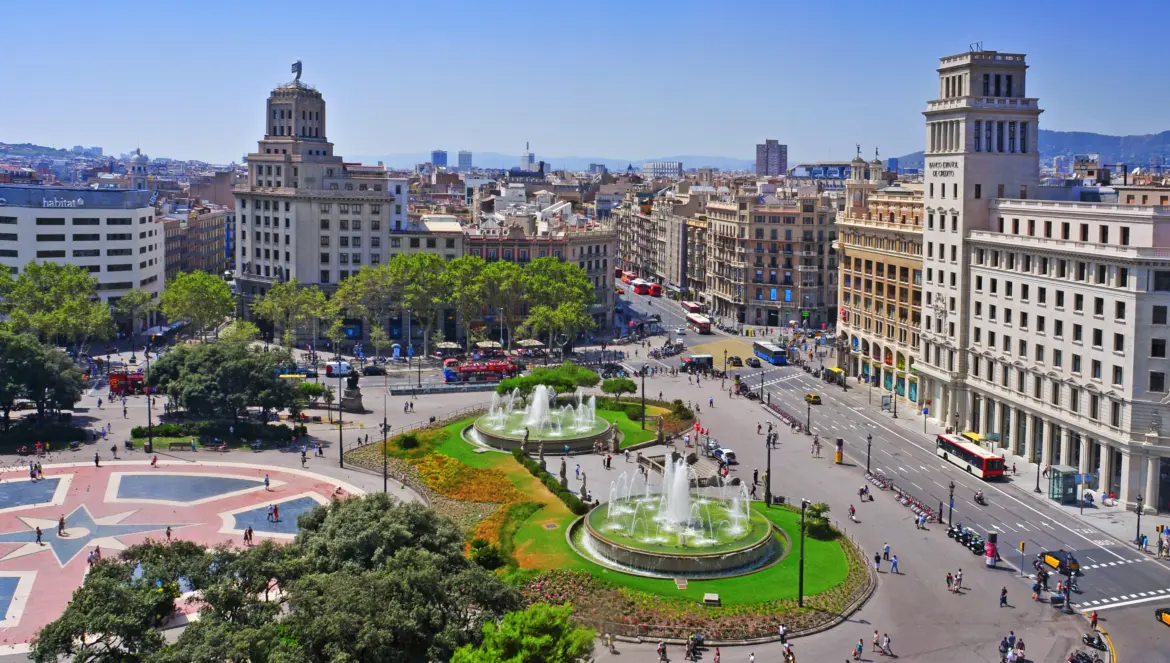Hola, my friends! Every great city has a central space that feels like its living room, a place where locals meet, travelers arrive, and the energy of the city gathers. In Barcelona, that place is Plaça de Catalunya. Vast, lively, and always humming with life, this square is the symbolic and geographic center of the city, linking the medieval Gothic Quarter and La Rambla to the northbound avenues of Eixample and Passeig de Gràcia.
For me, Plaça de Catalunya is more than just a point on a map. It’s a stage where Barcelona’s spirit unfolds: fountains sparkling in the sun, pigeons scattering as children chase them, voices rising in a dozen languages, and the sense that all roads lead here.
A Brief History
Plaça de Catalunya might feel timeless today, but it is a modern creation born out of transformation. Until the mid-19th century, this area lay just outside Barcelona’s medieval walls. When those walls were torn down in 1854, making way for the city’s expansion, the idea of creating a grand central square was proposed. Official approval came in 1859, but it wasn’t until the early 20th century that Plaça de Catalunya took on the form we recognize today.
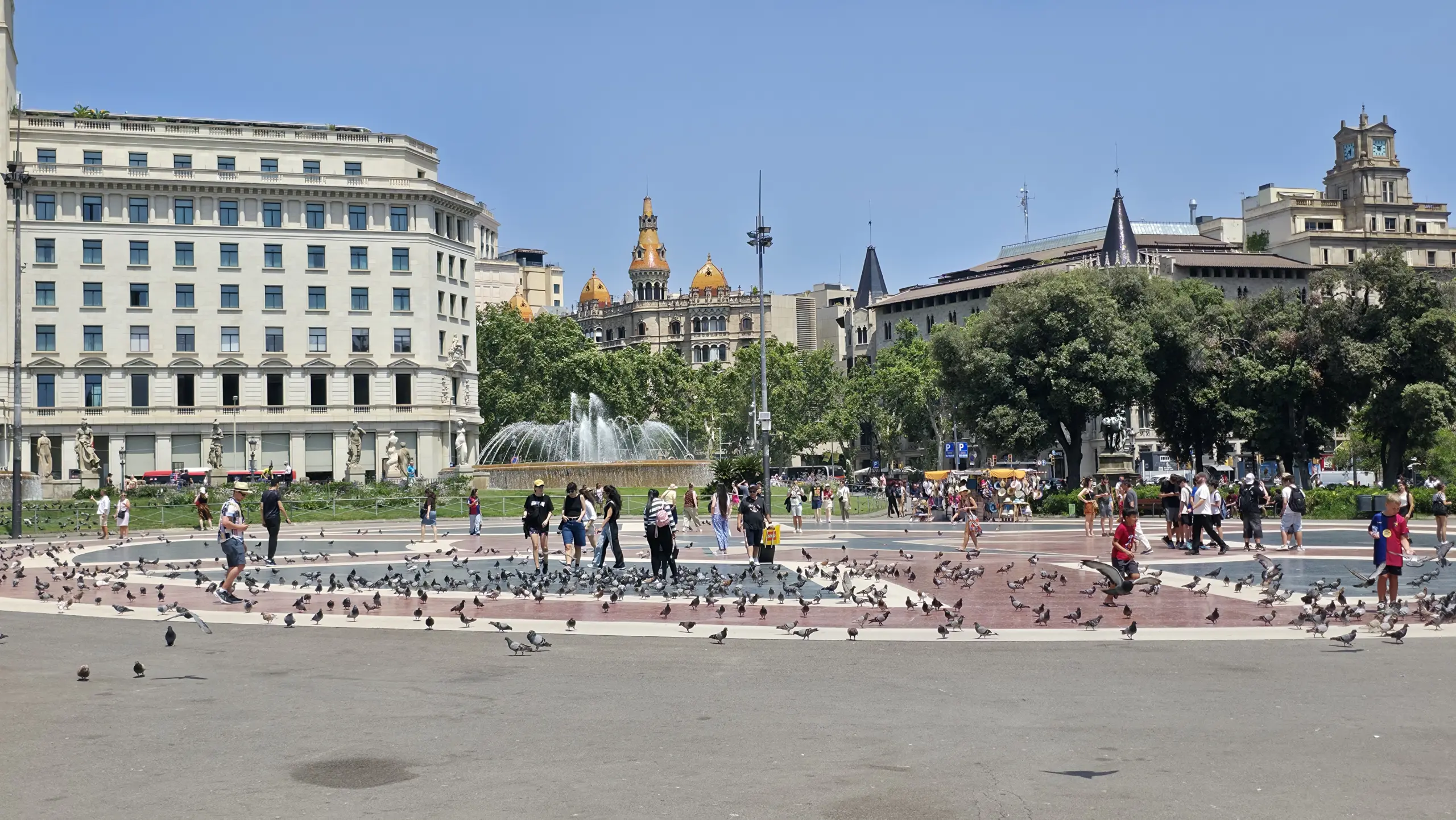
The square was officially inaugurated by King Alfonso XIII in 1927, its fountains, sculptures, and gardens making it a grand new centerpiece for the city. Just two years later, during the 1929 Barcelona International Exhibition, it became a key gathering point, cementing its role as Barcelona’s urban heart. Since then, Plaça de Catalunya has witnessed history in motion: from political rallies and public demonstrations to concerts, festivals, and jubilant FC Barcelona victories that turn the square into a sea of flags, chants, and joy.
Today, Plaça de Catalunya remains the pulse of Barcelona, the meeting point where history, daily life, and movement converge.
What to See
Plaça de Catalunya isn’t just a traffic circle or transit hub, it’s a landscape of art, fountains, and urban beauty.
- Fountains: The large central fountains bring a rhythm to the square. On hot days, the mist feels refreshing, and at night, they are beautifully lit, glowing like liquid sculptures.
- Statues & Sculptures: Look closely and you’ll find works by celebrated Catalan artists. My favorite is Josep Clarà’s La Deessa (The Goddess), serene and elegant in the middle of the bustle. There are also allegorical groups symbolizing Catalonia, wisdom, and labor, reminders that the square is as much about culture as movement.
- Gardens: The patches of greenery soften the vast plaza, offering benches for resting and watching the world go by.
- The Pigeons: Love them or not, they’re part of Plaça de Catalunya’s character. Children chase them, photographers capture them mid-flight, and they’ve become as iconic as the fountains.
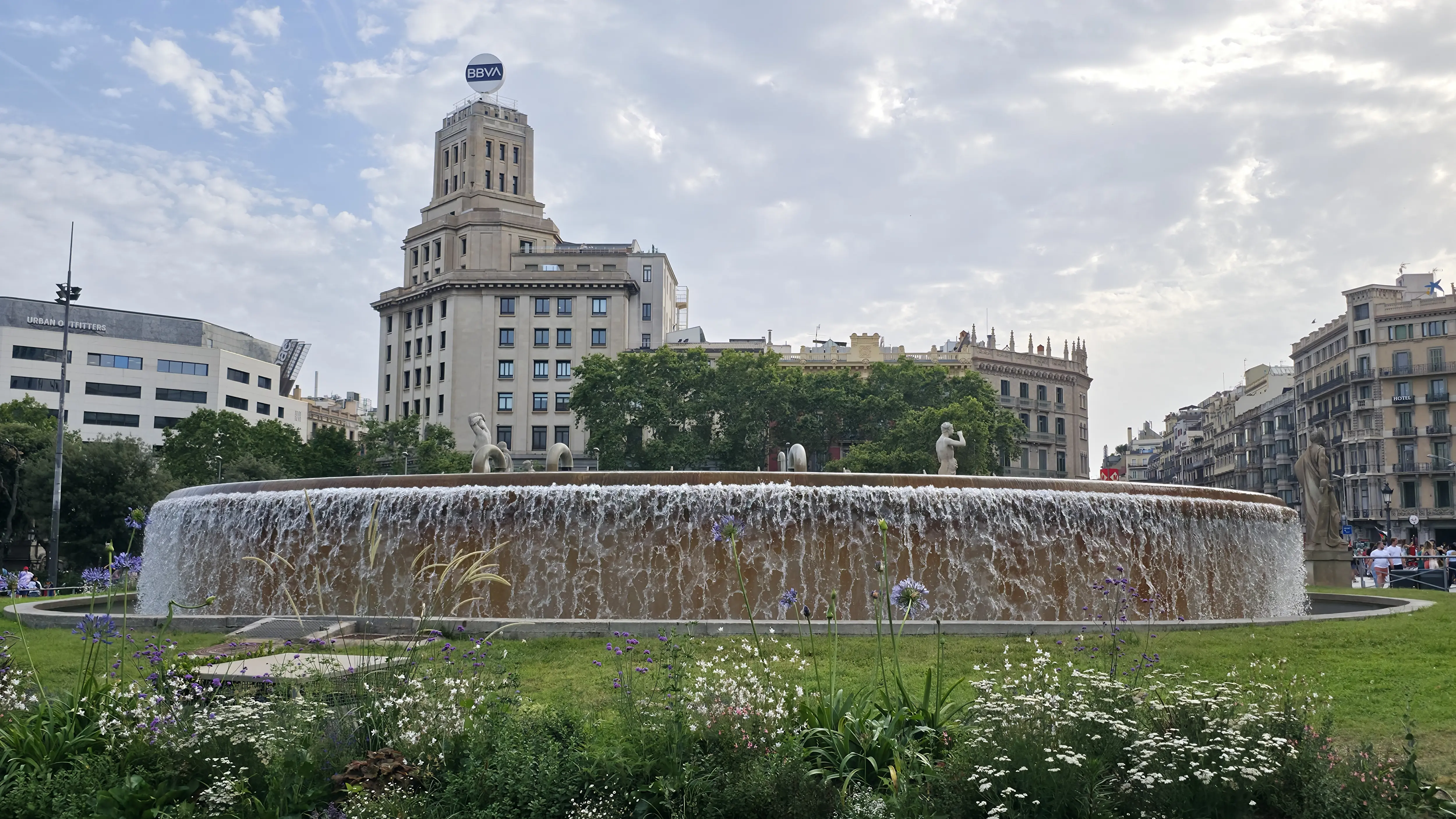
Gateway to the City
Plaça de Catalunya is not only a destination; it’s the gateway to Barcelona’s most famous streets and neighborhoods.
- South: From here, La Rambla flows down toward the sea, filled with kiosks, cafés, and performers.
- North: Passeig de Gràcia begins here, lined with Gaudí’s Casa Batlló and La Pedrera as well as high-end boutiques like Chanel, Gucci, and Prada.
- East & West: The square borders the Gothic Quarter and El Raval, neighborhoods filled with medieval alleys, tapas bars, and local life.
- Shopping Hubs: El Corte Inglés, Barcelona’s legendary department store, dominates one side of the square, while FNAC, El Triangle, and even Apple’s sleek glass store make this a shopping haven.
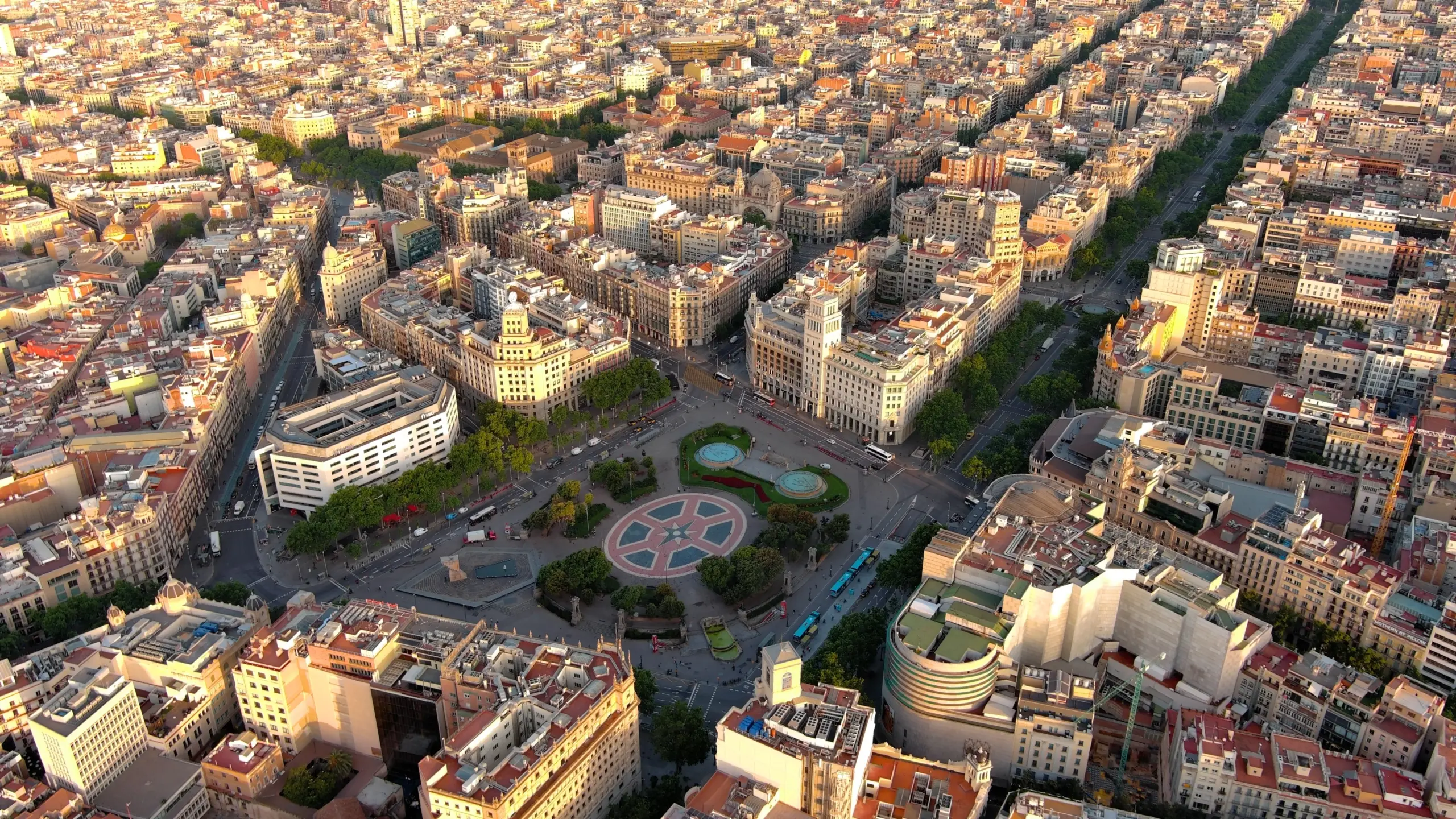
Plaça de Catalunya isn’t just the city center, it’s where all of Barcelona converges.
The Atmosphere
What makes Plaça de Catalunya unforgettable isn’t just its size, it’s the energy. By day, the square buzzes. Street performers play violins under the sun, families stop for photos by the fountains, tour groups gather with colorful umbrellas, and commuters stride across on their way to work. The air is full of sound: conversations in Catalan, Spanish, and a dozen other languages; the splash of water; and the flutter of pigeons taking flight.
By night, the square transforms. The fountains glow, the buildings are lit, and the space feels calmer. Couples stroll hand in hand, friends gather before heading to dinner, and the square serves as a backdrop for everything from evening walks to impromptu celebrations. On holidays like Christmas, the square becomes festive with lights and sometimes markets, making it feel even more magical.
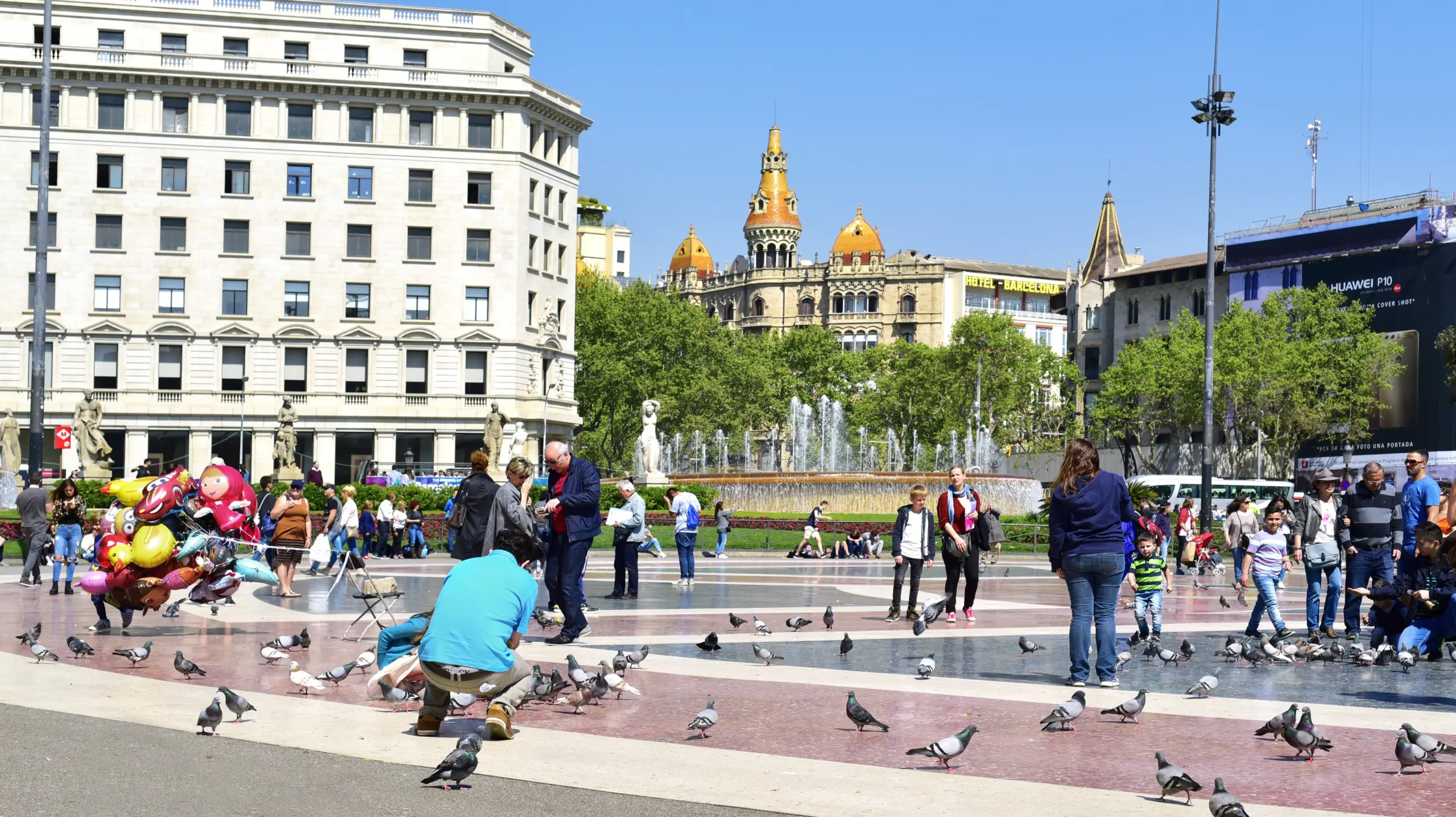
Through My Eyes
I’ll never forget my first afternoon in Plaça de Catalunya. I sat on a bench near the fountains, coffee in hand, and watched children chasing pigeons as laughter echoed across the square. Behind me lay the Gothic Quarter’s medieval lanes; ahead stretched the elegant Passeig de Gràcia. I felt like I was sitting at the very crossroads of Barcelona’s soul. Later that evening, I returned. The fountains shimmered under the lights, and the rush of the day had quieted into a hum. It was one of those moments where I thought: this isn’t just a square; it’s Barcelona’s living heartbeat – past, present, and future flowing together.
Tips for Visiting
- When to Go: Early mornings offer calm and golden light for photography. Evenings are lovely for fountain views.
- Transport Hub: Plaça de Catalunya is one of Barcelona’s busiest transport nodes, with metro lines L1, L3, L6, L7, commuter trains, buses, and the Aerobus to the airport all stopping here.
- Meeting Point: Many walking tours of the Gothic Quarter or day trips outside Barcelona begin here. It’s the city’s favorite rendezvous spot.
- Shopping: Don’t miss El Corte Inglés for one-stop shopping or simply stroll up Passeig de Gràcia for luxury fashion and Gaudí landmarks.
- Safety Tip: Like any busy square, keep an eye on your belongings, especially in the evenings or during crowded events.
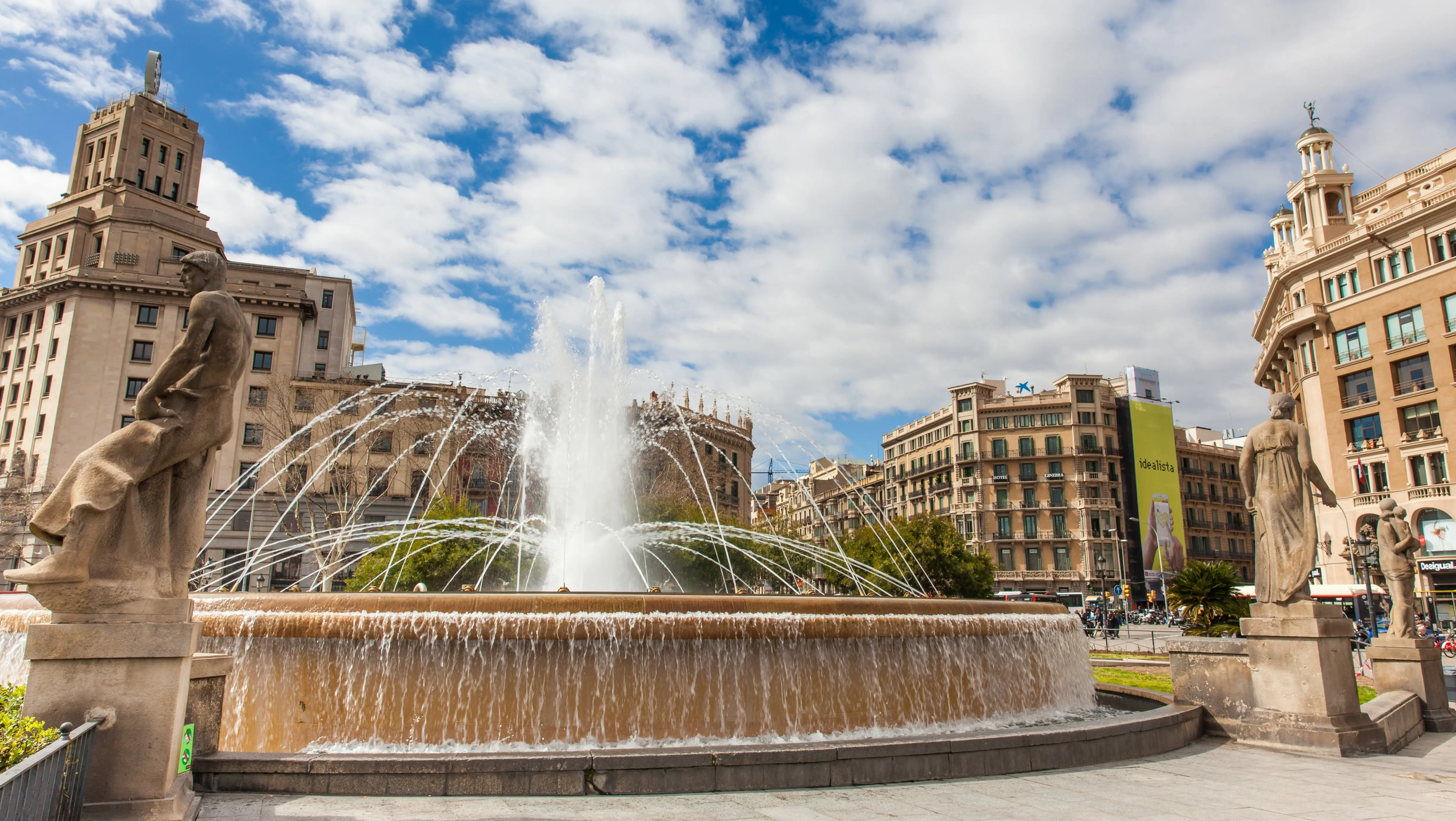
Final Thoughts
Plaça de Catalunya isn’t just a stop on your Barcelona itinerary, it’s the center of gravity for the whole city. It’s where the old and the new meet, where locals gather, and where visitors get their first taste of Barcelona’s energy.
My advice? Don’t just rush through on your way to La Rambla or Passeig de Gràcia. Pause. Sit by the fountains. Watch the pigeons swirl into the sky. Listen to the chatter around you. It’s in these unplanned moments that the soul of Barcelona reveals itself most clearly.
Have you ever paused in Plaça de Catalunya to take it all in? Share your memories or first impressions in the comments below, I’d love to hear them!
xoxo,
Bubbly 🎈

